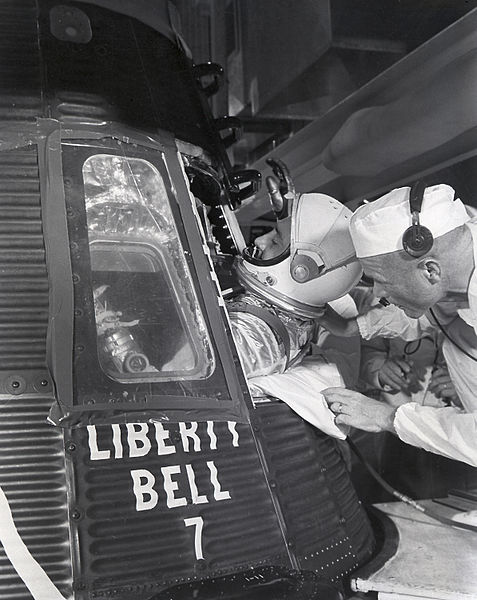Mercury-Redstone 4 was the second United States human spaceflight, on July 21, 1961. The suborbital Project Mercury flight was launched with a Mercury-Redstone Launch Vehicle, MRLV-8. The spacecraft, Mercury capsule #11, was nicknamed Liberty Bell 7. It was piloted by astronaut Virgil "Gus" Grissom.
Astronaut Gus Grissom climbs into Liberty Bell 7
Virgil Ivan "Gus" GrissomProject Mercury Crewed missions← Mercury-Redstone 3Mercury-Atlas 6 →
Launch of Mercury-Redstone 4 at Cape Canaveral Air Force Station Launch Complex 5
Grissom is hoisted to safety following the sinking of Liberty Bell 7
A sub-orbital spaceflight is a spaceflight in which the spacecraft reaches outer space, but its trajectory intersects the surface of the gravitating body from which it was launched. Hence, it will not complete one orbital revolution, will not become an artificial satellite nor will it reach escape velocity.
Science and Mechanics cover of November 1931, showing a proposed sub-orbital spaceship that would reach an altitude 700 miles (1,100 km) on its one hour trip from Berlin to New York.
The X-15 (1958–1968) was launched to an altitude of 13.7 km by a B-52 mothership, lifted itself to approximately 100 km, and then glided to the ground.






